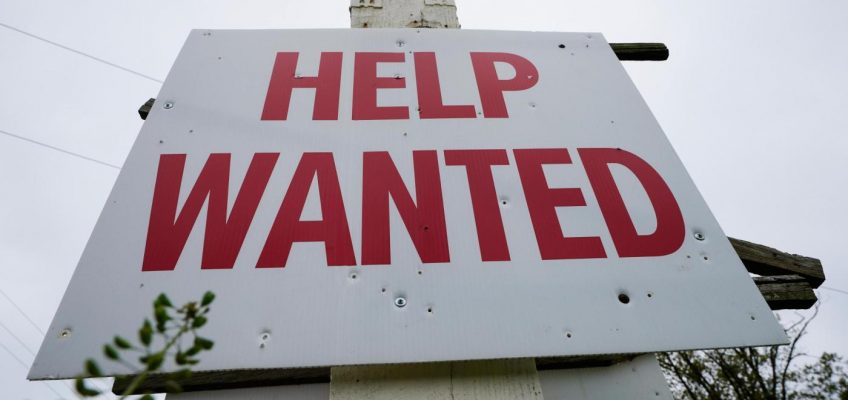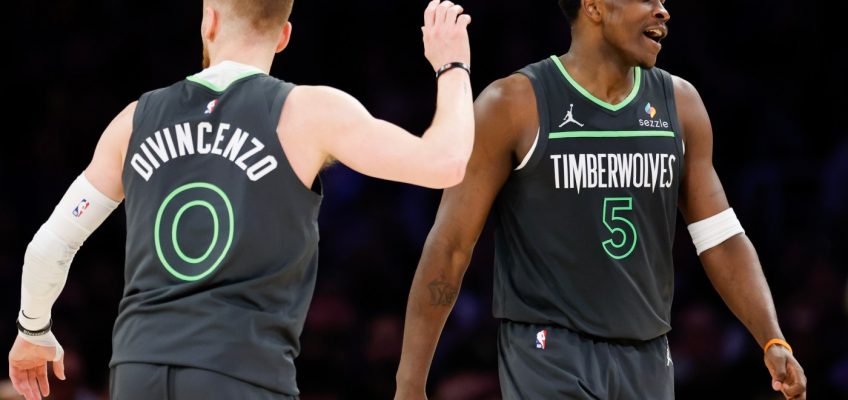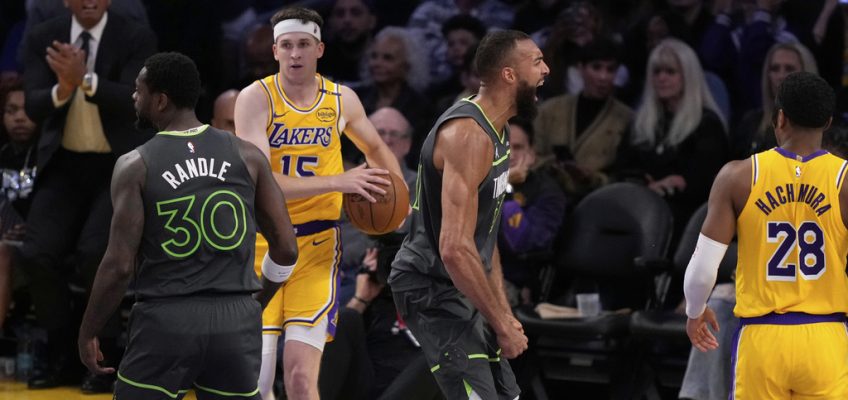Not only did the Timberwolves upset the third-seeded Lakers in the first round of the Western Conference playoffs, but they did so handily. Minnesota downed Los Angeles in just five games, beating the Lakers twice on their home floor.
How Minnesota so drastically outperform the prognosticators’ expectations?
Five are five reasons why the Timberwolves beat the Lakers with relative ease:
There are numerous ways in which Edwards positively impacted this series for Minnesota. The most notable was in Game 4, in which Edwards essentially stole a contest in which the Wolves were largely out-played with some sensational shot making at the start of the fourth quarter to get the Wolves back into the game, and prolific playmaking at the end to win it.
He scored 43 points to go with nine rebounds and six assists Sunday in the game that proved to be what broke the Lakers’ spirits.
But even on the nights where Edwards stat lines were less gaudy, his impact remained profound. The Lakers had no matchup for the all-star guard, meaning they had to build their entire defensive scheme around stopping him. Their gap-heavy, switch-heavy approach — designed to limit his runway to the paint — freed up Minnesota’s other players to shine.
It left Minnesota’s shooters open on the perimeter, Rudy Gobert standing by himself near the rim and created mismatches that Julius Randle was able to exploit on a nightly basis. Edwards’ offensive prowess put the Lakers in a bind from which they could not escape.
“When you play next to (him), it made the game a lot easier,” Randle said. “Because they throw two or three people at him, so you just got to be, willing to move and be in the right spaces on the floor. You got to be able to take advantage of that. There’s not a person in the world that can guard him one on one. So teams are throwing everything at him. I always tell him, ‘Go be great. But if you need me, I’m right there for us.’ I just try to make the game easy on him by attacking and putting pressure (on the defense).”
Size matters
Minnesota eviscerated the Lakers on the glass by the end of the series, culminating in a Game 5 in which Minnesota out-rebounded Los Angeles 54-37.
The Lakers’ best lineup — LeBron James, Luka Doncic, Rui Hachimura, Austin Reaves and Dorian Finney-Smith — included five guards/wings and zero centers. That unit features five guys who can space the floor and play off the catch offensively. But while it had length, it did not have size.
So there was no one to box out Gobert on the interior. And there was no one to deter Edwards, Randle or Jaden McDaniels from attacking the paint. Small ball is great in doses, but Minnesota proved to have the size to punish the Lakers’ approach.
Minnesota’s primary advantages throughout the series were that it was bigger, faster and stronger than Los Angeles.
Volume
Those physical advantages led to Minnesota not only out-rebounding the Lakers, but also turning Los Angeles over more frequently than the Wolves gave the ball up themselves. That all meant Minnesota got more looks at the rim than the Lakers.
Minnesota took 435 shots to the Lakers’ 394 in the series. The Wolves had more shot attempts than Los Angeles in every single game. The Wolves also attempted 16 more free throws than the Lakers. The more shots you get up, the better chance you have of out-scoring your opponent.
The shear volume of attempts allowed Minnesota to win games even though the Lakers generated higher numbers of open and wide open looks in Games 2-4, and it allowed the Wolves to overcome a dreadful shooting performance Wednesday in which they went 7 for 47 from beyond the arc.
Roster Versatility
Lakers coach J.J. Redick noted there’s a “tradeoff” to every lineup decision he could make in the series. The Lakers struggled mightily to score when their lone center, Jaxson Hayes, was on the floor against Minnesota. So Los Angeles ditched Hayes in favor of small ball for all of Game 5, and the Lakers were promptly destroyed on the glass.
Frankly, given Los Angeles’ lack of depth, Redick didn’t have much in the way of available options. Yes, the Lakers clearly needed a center on the court to limit the impact of Gobert on Wednesday. But Hayes isn’t a good enough player to receive extended run in a playoff game.
Timberwolves coach Chris Finch, meanwhile, has a wide range of buttons at his disposal to press. He did so masterfully in the series. In Games 3 and 4, when it was clear Minnesota needed offense and floor spacing down the stretch, Finch turned to Naz Reid and Donte DiVincenzo. On Wednesday, when the Lakers went small, Finch was able to lean into Gobert for the big man’s interior dominance. When Minnesota needed a jolt of energy, Finch turned to rookie wing Terence Shannon Jr.
So often, depth is thought of as a mode of spreading out minutes to keep players fresh. But just as important in the playoffs is the optionality it gives a team to attack an opponent’s weaknesses and mitigate strengths.
For every challenge an opponent presents this postseason, Minnesota figures to have answers somewhere across its eight-man rotation of starter-quality players.
“I think that’s what makes this team special is you have so many guys that can start games and that can finish the game,” DiVincenzo said. “How many coaches in the NBA have that luxury?”
Defense wins
The Lakers trotted out some talented five-man scoring lineups in this series. But the effectiveness of those groupings was limited by Minnesota’s number of quality defenders. When push came to shove in the fourth quarters of every game, Minnesota’s defense tightened the screws and suffocated the Lakers’ offense.
Los Angeles shot no better than 35% from the floor in the final frame of any game, scoring no more than 20 points in a fourth quarter all series.
And, on the flip side, the Lakers didn’t have nearly enough defenders on the floor at any one time to match up with Minnesota.
It took little effort from Minnesota’s offensively to generate a tasty mismatch that Edwards, Randle or even McDaniels could exploit off the bounce to either score or collapse the Los Angeles’ defense. Two-way players are at a premium come playoff time for matchup purposes, and Minnesota’s roster is flush as many as you’ll find across the association.
Narrative-busting Timberwolves knock out Lakers, advance to West semifinals
Frederick: Anthony Edwards is NBA’s next must-see star, whether he likes it or not
Is this lineup the Timberwolves’ clutch-time solution?
Despite 3-1 series lead, Timberwolves aim to match Lakers’ desperation in Game 5
NBA says Timberwolves got away with late trip in win over Lakers




